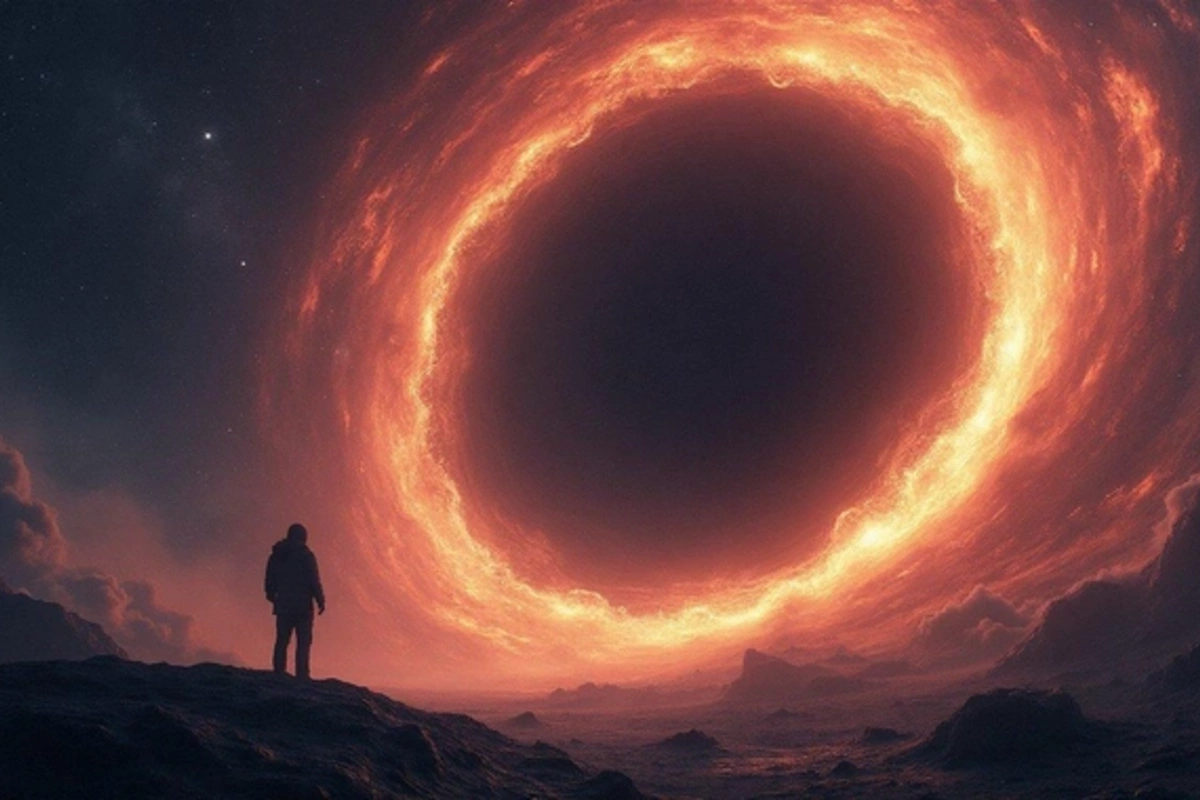26 May , 09:20
0

COSMIC ABYSS: WHAT AWAITS A HUMAN WHEN ENCOUNTERING A BLACK HOLE
A black hole is a unique phenomenon of space-time, where gravitational forces reach such colossal power that even light becomes trapped. These cosmic monsters are born as a result of the dramatic collapse of massive stars that have exhausted their thermonuclear fuel, or through the merger of neutron stars. The key element of a black hole is the event horizon, an invisible boundary beyond which begins a journey into the unknown. What lies beyond this line remains one of the greatest mysteries of modern physics.
Approaching a black hole is a journey into a world of paradoxical phenomena and incredible physical effects that challenge human imagination.
When approaching this cosmic giant, a human immediately falls under the influence of its powerful gravitational field. The most terrifying effect known to scientists is spaghettification. This phenomenon occurs due to the difference in gravitational pull: gravity affects the part of the body closer to the black hole more strongly. As a result, the human body begins to stretch lengthwise, like pasta, while simultaneously compressing at the sides. For stellar-mass black holes (about 10 solar masses), this deadly process will begin even before crossing the event horizon, making survival impossible due to catastrophic tissue rupture.
Interestingly, supermassive black holes (with masses of millions or billions of solar masses, similar to those at the centers of galaxies) have significantly weaker tidal forces at the event horizon. Theoretically, a human could cross this boundary without being immediately destroyed. But what awaits beyond?
According to Einstein's general theory of relativity, time for a traveler approaching a black hole will begin to slow down relative to a distant observer. If someone watches a person falling into a black hole from a safe distance, they will see the falling person's movements slow down, their light redden due to gravitational shift, and it will appear as if the person never reaches the event horizon. However, the traveler themselves will not notice any anomalies in the flow of time until the moment of crossing the fatal boundary.
After crossing the event horizon, a human finds themselves in a zone where familiar laws of physics begin to distort. To the outside world, they simply disappear, but for the traveler, the adventure continues. What will they see? It depends on the parameters of the black hole. In the case of a supermassive object, changes may not be immediately noticeable due to relatively weak tidal forces at the initial stage.
Inside the event horizon, the traveler will inevitably be drawn to the singularity—a hypothetical point at the center of the black hole with presumably infinite density. In this region, space-time is so curved that ordinary physical laws cease to function.
The singularity represents a theoretical point where all known laws of physics, including concepts of space and time, lose meaning. Modern science cannot describe what happens in the singularity, as general relativity and quantum mechanics are unable to model such extreme conditions. A human, in